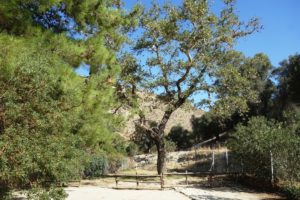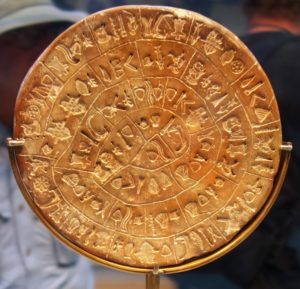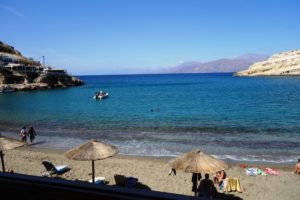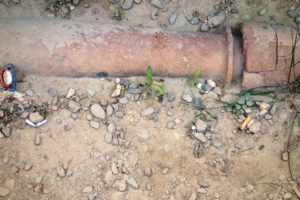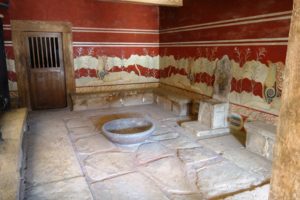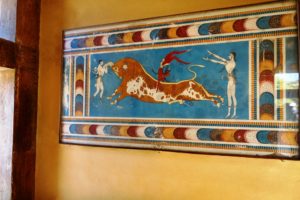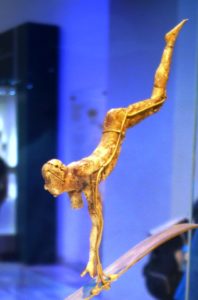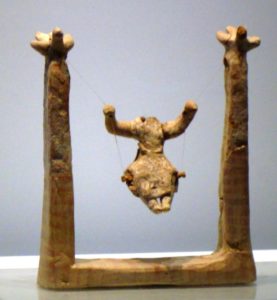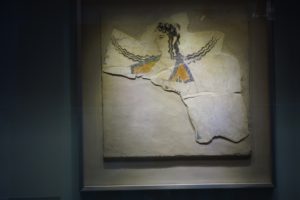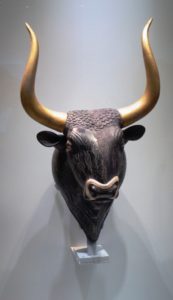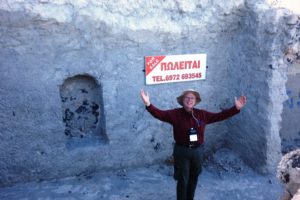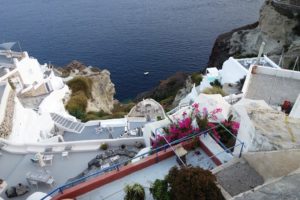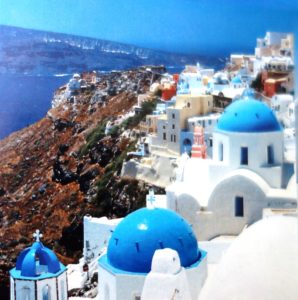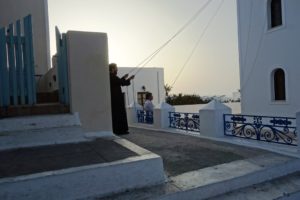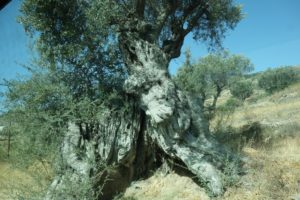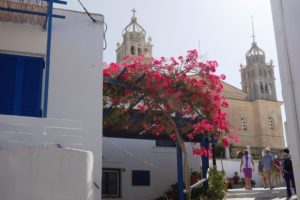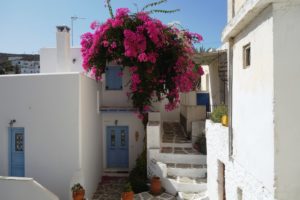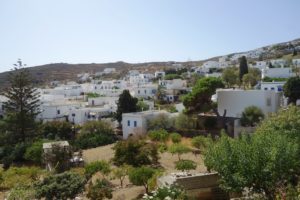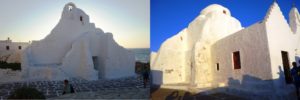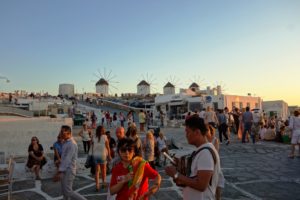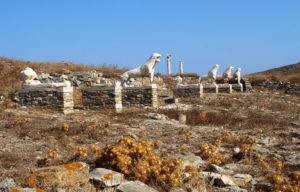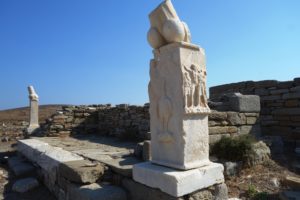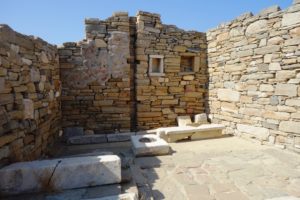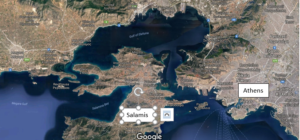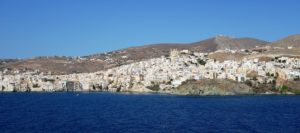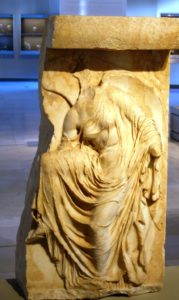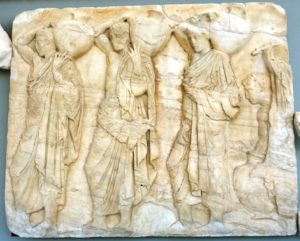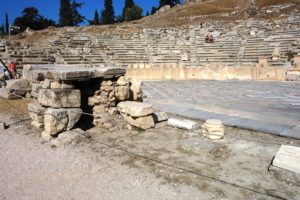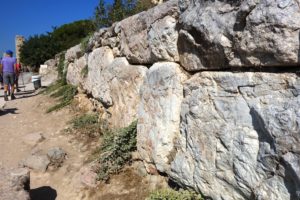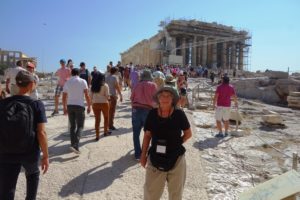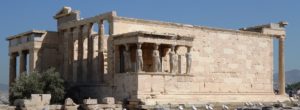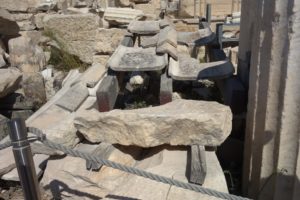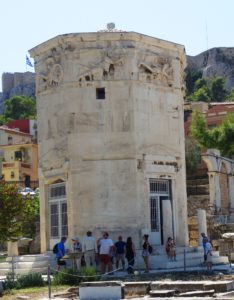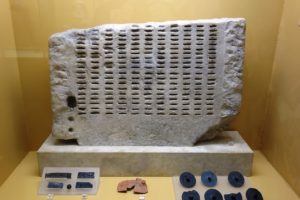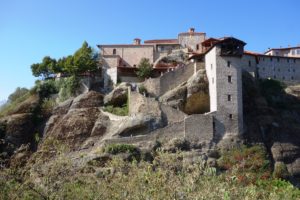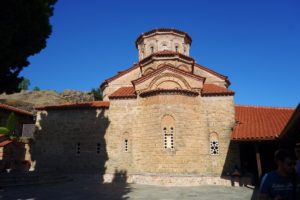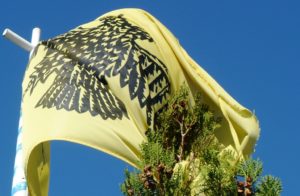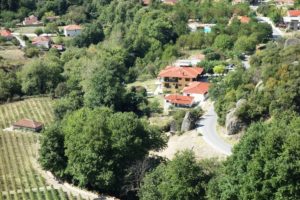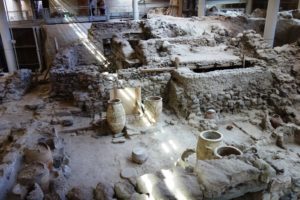
House basement with Decorated Storage Vases
We had an amazing visit to the archeological site on the southern edge of the island near the village of Akrotiri; followed by a tour of the corresponding Museum of Prehistoric Thera. People have lived at this site since the 5th century BC. The more recent inhabitants were the most interesting. These people lived here in the 2nd century BC. They came from the island of Crete and were originally part of the Minoan civilization. Once established on the island of Santorini, they developed a civilization that was incredibly wealthy and was 1000 years in advance of anybody else.
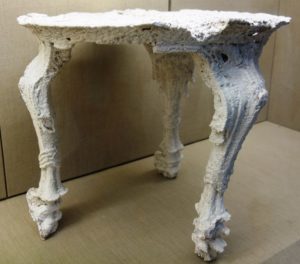
Very Expensive wood Coffee Table
The dig is totally enclosed in a building. The roof automatically adjusts to control the amount of light. Temperature and humidity are also controlled. All this was done when Greece had a totalitarian government. The government wanted to emphasize Greece’s contributions to civilization to encourage tourism and made unlimited funds available to the Athens University school of archeology. Today, there are barely enough funds to maintain the existing infrastructure. No archeological progress is being made, but what we can see is almost unbelievable.
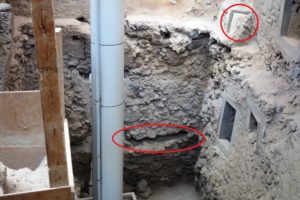
2 story house with toilet and sewage
The firsts pic shows the basement of a house which had some large jugs for storing supplies. In spite of this being basement storage, the jugs were elegantly decorated. The second picture shows an extremely expensive wooden table. Like all wood, the table was burnt and recovered, as I will reveal soon. This pic shows they had 2-story houses with toilets and a sewage system (circled in red). All this 4,000 years ago!
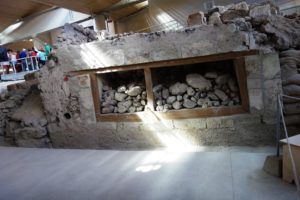
Village Square
The village itself was large. The archeologists discovered a village square, which means the community was planned. The incredibly large window you see in the house at one side of the square was probably to provide extra light and ventilation to people working on a loom. These people had both wool and linen. Cotton and silk would not be available for quite a while.

Dolphins Swimming in Water
The museum contained some of the art found at the site. Jugs were decorated with dolphins swimming in the water, birds in flight, and other abstract concepts. Some of their art looked quite modern. The sophistication of the art was not available in any other western society for 1000 or 1500 years. The freedom of the lines indicates the society was free — probably an self-governing aristocracy. There is no indication these people had a king, emperor, or other ruler.
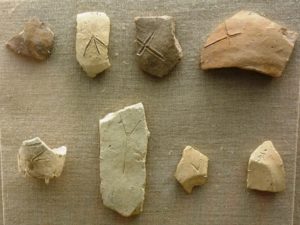
Early writing
The people had a very advanced notion of trade. Scales and weights were found, allowing the precise measure of goods. Archeologists found indications of the beginning of writing. All manor of advanced technology was found, including the ability to hollow out marble to make cups, and advanced bronze processing.
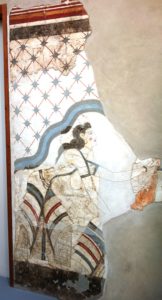
Fresco of fashionable woman with makeup and painted nails
The frescos were particularly incredible. The medium itself requires assurance and free-flowing lines. The painting and drawing are done on moist plaster. They cannot be redone or fixed. The subject of the frescos is equally informative. This fresco is of an extremely fashionable woman, with a fancy double-skirt, full makeup, jewlery, and even painted fingernails. One can easily discern her sense of self. This is nothing like the stilted characters Egypt and other civilizations were creating at the time. The picture below is of dancing monkeys. Monkeys didn’t live in Greece. This fresco shows how much traveling people in this society did. Up to this time, every character was presented in profile. The monkey circled in red is the first known instance of an artist rendering a frontal view of a face. And the last, for a very, very long time.
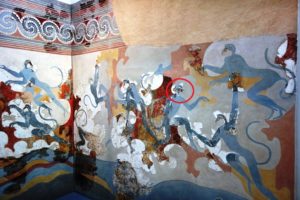
Fresco of Dancing Monkeys
The visit was delightful, in part because I had not read anything about these people. The city was abandoned in 1628 BC when the volcano made its very large eruption. The city was buried just as Pompeii was. But the citizens had plenty of warning. They were able to pack up their valuables and leave the city. They took all their jewelry and precious metals. Pumice covered the island. Anything organic burned. Wooden objects, such as the coffee table above, left a void in the pumice. Archaeologists used this as a mold and poured plaster of paris into the void to discover the object.
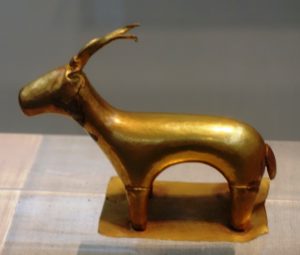
Solid gold Ibis
This is the only precious object found. It is a gold Ibis. There was a large pile of animal horns, which archaeologists determined was from sacrificed animals. They found a clay box at the bottom of the pile of horns. Inside the clay box was a wooden box. Inside the wooden box was the Ibis.
Our guide promised to tell us more about these people as well as the Minoans. But we will have to wait until later in the trip to learn what she has to say.
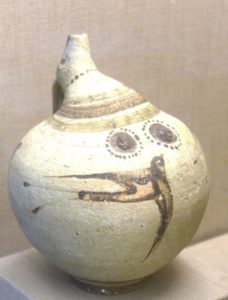
Jug decorated with flying bird
Tonight, we will visit a winery on the edge of the cliff to enjoy some locally produced wine and an amazing view. Dinner will follow.
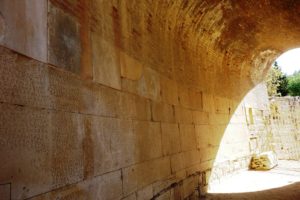 We visited some more ruins today. This was part of a Roman theater. In building the wall, the Romans used some block that was laying around from earlier times, and just by coincidence used block that had the law code of Gortyn inscribed on it. The Romans used the blocks in random order. Archeologists rebuilt the wall using the same blocks, but put them in order so once could (theoretically) read the code as it was originally inscribed.
We visited some more ruins today. This was part of a Roman theater. In building the wall, the Romans used some block that was laying around from earlier times, and just by coincidence used block that had the law code of Gortyn inscribed on it. The Romans used the blocks in random order. Archeologists rebuilt the wall using the same blocks, but put them in order so once could (theoretically) read the code as it was originally inscribed.
